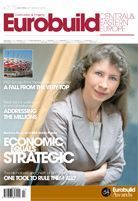In the silicon age, we increasingly us find ourselves seated throughout our working day in front of a screen tapping away at keyboards and endangering our health with repetitive strain injury. Indeed, much of the work that was commonplace a mere twenty years ago has now become obsolete with the advent of the internet. The net has brought other benefits, such as not needing to memorise an encyclopaedia for those times when we need to know say the mass of the sun (1.99x1030kg) ? Wikipedia is a mere mouse click away. It's not that we have become lazier, but it's just that the work we now do is just that bit more physically undemanding. So when a valuer is confronted with the legal obligation to visit a property, why bother when no one is checking? In Poland, once the required examination has been passed and a licence issued by the Ministry of Transport and Maritime Economy, valuers are free to practise their trade wherever and however they like in the country. Surely for a Warsaw-based






























































